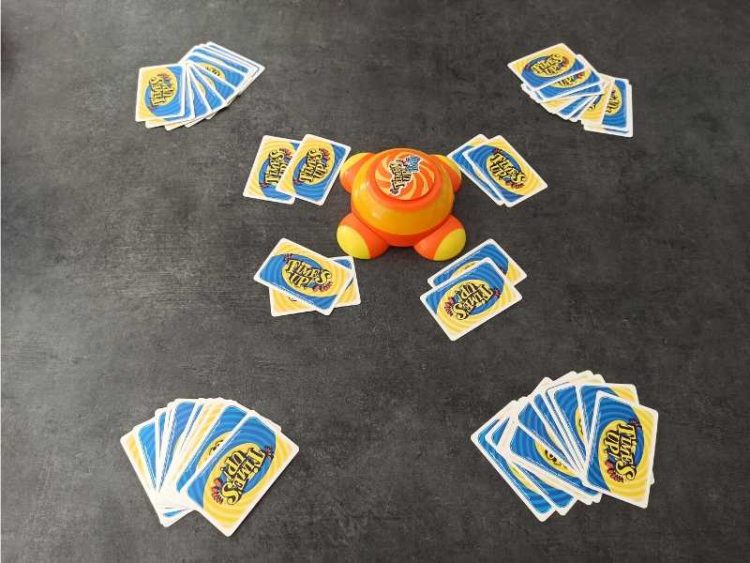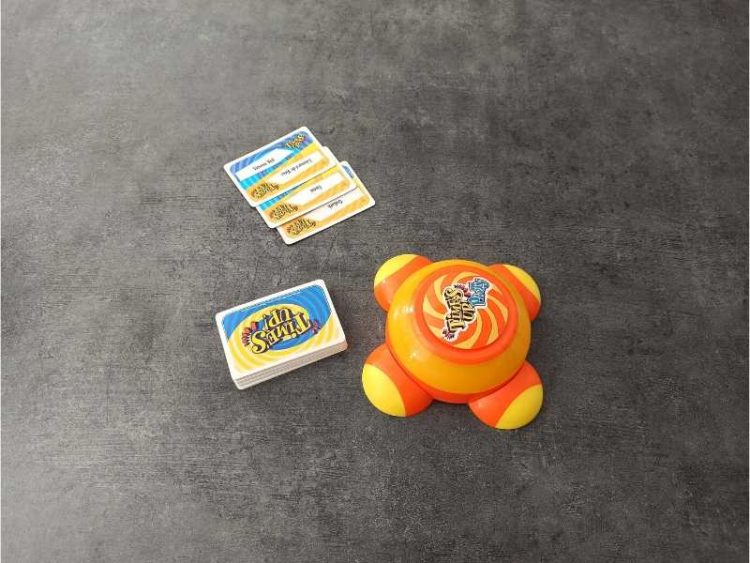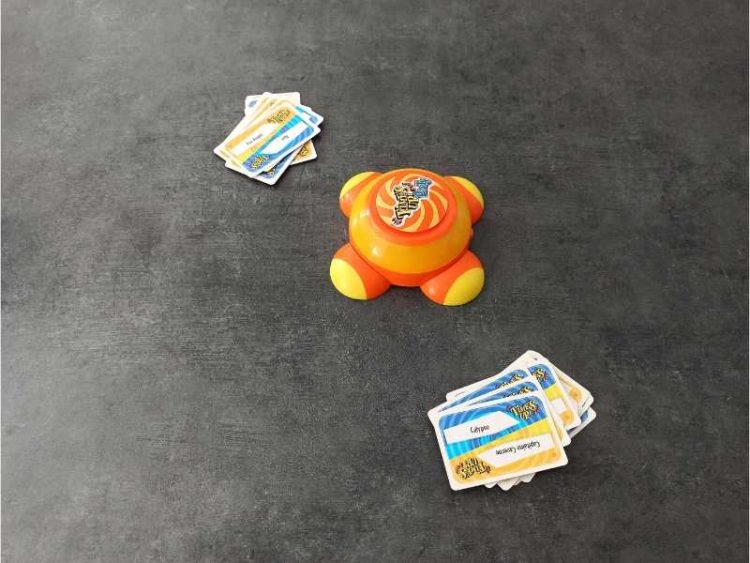
OBJECTIVE OF TIME’S UP: The objective of Time’s Up is to guess as many personalities as possible.
NUMBER OF PLAYERS: 4 to 12
MATERIALS: The cards provided with the game, a sheet of paper and a pencil to record the results of the rounds, and an hourglass or a stopwatch.
TYPE OF GAME: Guessing game
AUDIENCE: Any age
OVERVIEW OF TIME’S UP
Time’s Up is only played by teams. With its simple rules, everyone will quickly get into the game. The goal is to guess as many personalities as possible before the time is up. The game is played in 3 rounds, with fun changes in the guessing rules of each round. Each team has to guess as many personalities as possible, which are written on the game cards.
SETUP
To begin, form teams of 2 or 3 players. Each team should be distributed around the table without players from the same team being next to each other. Deal 40 cards among the players. Then deal two more cards to each player, and randomly choose a colour between blue and yellow. Each card has a name in blue and a name in yellow, this colour indicates which names will be used on each card during the whole game, the other colour being completely ignored. Then each player looks at their cards and removes 2 of their choice which are discarded from the game and put back into the box.
All the cards remaining in the players’ hands are collected and shuffled to form the deck of cards that will be used during the 3 rounds.

GAMEPLAY
Each attempt to make players guess lasts only 30 seconds. Each time, one player of the team has to make his teammates guess. That player draws a card, reads the character’s name (especially not out loud!) and tries to get his teammates to guess it.
For the first round, the player who has to make the guess can talk as much as he wants to make his team guess the name of the character. It is of course forbidden to pronounce all or part of the character’s name, or even to mention one or more letters that are part of the name. It is also forbidden to discard a card if you can’t make it guess. As soon as the 30 seconds have elapsed, the team takes the cards it has guessed. It then goes around the other team and so on until all the cards have been guessed. The round is then over, each team counts the cards they have guessed, then all the cards are collected, shuffled to make a new deck and play the second round.
In the second round you have to make people guess with only one word. It may seem difficult, but the cards are the same, so a memorization work during the first round is essential if you want to win!
In the third round you only have the right to mime! Be clever to make people quickly guess the personalities! It is advisable to stand up to mime more easily. Although it is forbidden to speak, sound effects are allowed.
In the second and third set, you can discard (without revealing it) a card you can’t make guess, but it will come back in the next turns.

END OF GAME
At the end of the third round, the number of points won by each team in each round is added up.

Enjoy!
VARIATIONS
You might want to reduce or increase the 30 seconds timer depending on the number and experience of players.
It might be more fair to avoid mixing 2 players teams with 3 players teams. This usually happens only in 5 or 7 players games. In such cases, use the following rules:
- there are no more teams
- each player makes his left neighbour guess
- the points for guessed cards are scored by both players (place these cards between them)
- after having made guess, it’s not the player to your left who makes guess (after all, he just played too) but the player after him
- at the end of a round, a player’s score equals the number of cards between him and each of his neighbours
- Comprehensive Guide to the Board Game Go (weiqi, baduk) - January 23, 2024
- Are Creative Suites Changing Gaming - October 30, 2023
- Crowning the Kings of Solitaire: GameRules Recognizes Solitaired and MobilityWare as top Solitaire Games - October 20, 2023